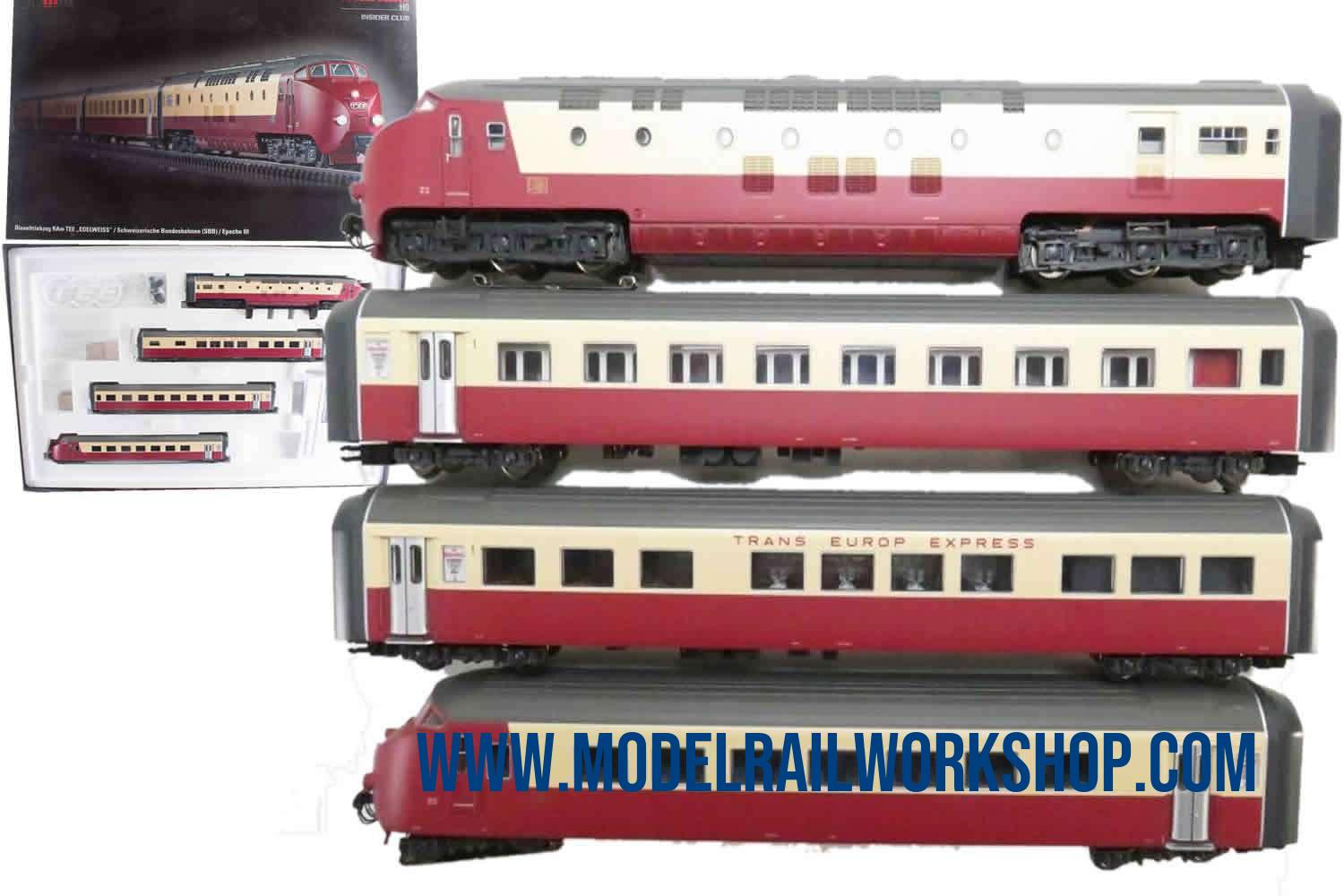
| KEY DATA | |
|---|---|
| Product Name | 39706 Diesel powered railcar - 1st cl - RAM 501 - EDELWEISS |
| Object type | Locomotive-Diesel |
| Product Line | Märklin Insider |
| Era | 1945-1970 (III) |
| Manufactured years | 2020-2021 |
| Type of housing | Metal |
| Length | 113,0 cm |
| Technology | Digital MFX+ |
| Railway company | CH-SBB Chemins de fer fédéraux suisses |
| Märklin RRP (Year) | 899€ (2021) |
| Koll valuation (Year) | 899€ (2022) |
| Url to Märklin | Klick to GoTo www.maerklin.de |
| No | Obj.No | Obj.txt | Category | Description |
|---|---|---|---|---|
| 39706-1 | RAM 501 | - | RAM 501 | Locomotive - Beige/wine red |
| 39706-2 | - | - | RAM 501 | Passenger car - Beige/wine red |
| 39706-3 | - | TRANS EUROP EXPRESS | RAM 501 | Passenger car - Beige/wine red |
| 39706-4 | RAM 501 | - | RAM 501 | Passenger end and service car - beige/wine red |
| Description | |
|---|---|